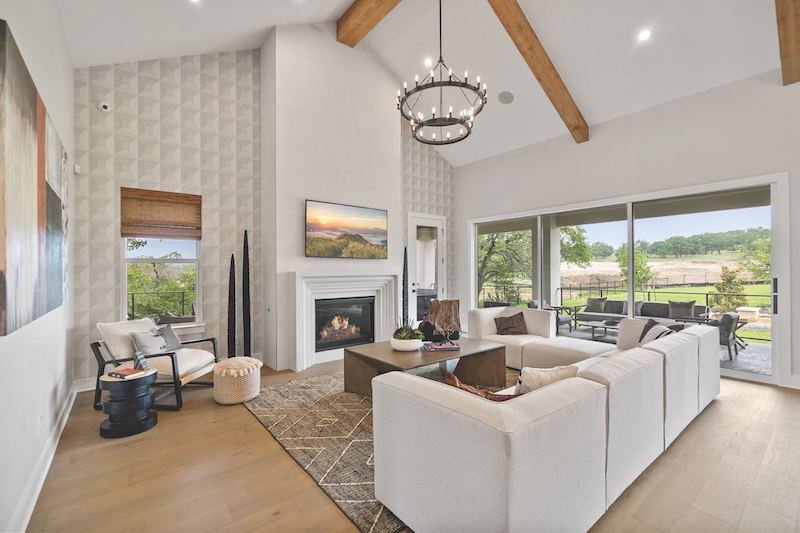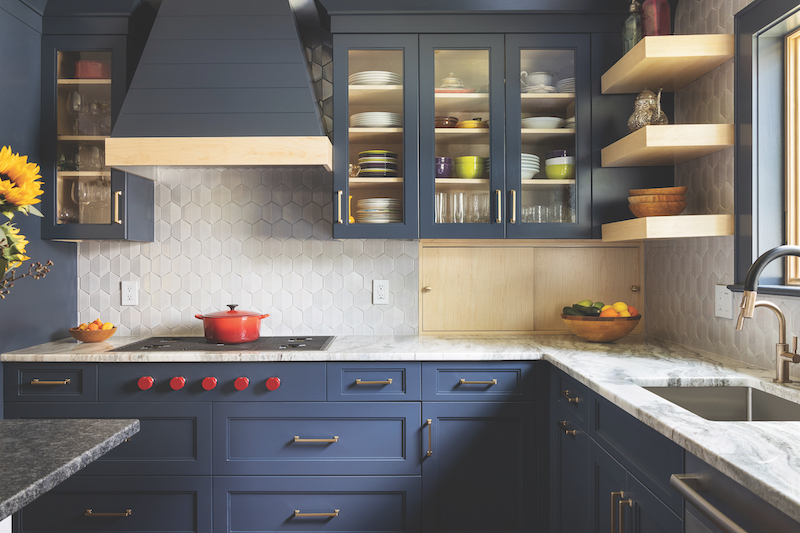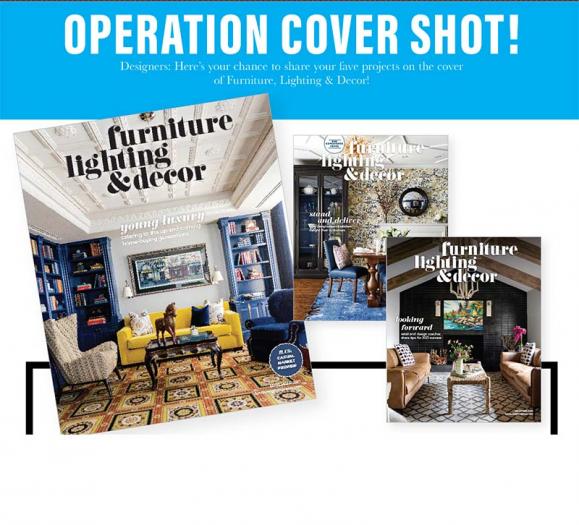In today’s marketing environment, social media is a given. For those in the home furnishings and design industry, if you aren’t on Facebook, Instagram or elsewhere, are you missing opportunities to connect with potential clients or build stronger relationships with the clients and customers you already have? The experts certainly think so. And for the designers, retailers and suppliers we talk to, it’s better not to find out what happens if you choose to ignore those platforms where your customers are probably spending much of
their time.
Approaching social media without understanding what you’d like to achieve from those interactions or just throwing posts against the wall to see what sticks, however, could be equally as disadvantageous to your business as not doing anything at all.
According to Leslie Carothers, Principal at Savour Partnership and digital marketing expert, preparing your social media strategy starts with understanding the goals you wish to achieve from your outreach. Social media requires effort, whether it’s yours or someone you hire who understands your business.
“You have to define the goal and then plan the strategy to achieve that goal,” Carothers says. “There is a set of strategies for brand awareness, and a different set of strategies and tools that you would use to increase sales,” for example, she adds.
For Angela Harris, Founder of TRIO Design, in Denver, CO, and Bode & Well, her home furnishings collection, it’s important that her social media messaging ties both brands together.
“I have a slightly different take than many designers,” she says. “It’s important that I keep a consistent message and voice between the brands to ensure they are working together to make each one stronger. We also want our voice to showcase who we are culturally, what we stand for as an organization and as a brand.”
While Harris’s marketing team certainly showcases the design firm’s work, that isn’t the primary focus in TRIO’s and Bode & Well’s social media plan. This progressive company offers such incentives as a wellness week, for example, where the company celebrates its employees and allow them time to relax. They share graphics on social media that showcase these company culture efforts as well as the beautiful spaces they’re creating. When she shares spaces designed by TRIO, that correlates with the company’s wellness ethos as well. “We just want to show you something really beautiful that will make your day better,” she says. “We are a team of people who share the same values, and we want those values to resonate with our clients and with our industry partners.”

Sharon Sherman, Founder of Thyme & Place Design, in Wyckoff, NJ, worked with Carothers to hone her social media strategy. Her goals? Get followers to visit her website as well as understand her design aesthetic and company values. Sherman, whose primary design focus is kitchens and baths, likes to share her expertise and her attention to quality. When you’re renovating, she says, “you want someone who really knows what they’re doing so you get the most positive impact for your home and your lifestyle.” As with design, Sherman adds, when it comes to social media, it’s best to work with a professional and have a plan. “Leslie is the go-to gal for everything and she provides good direction,” Sherman shares.
Choosing Your Platform
Sherman continues that leveraging the right social media platforms is as important as imparting a cohesive message. She’s found her audience on Instagram, Facebook, LinkedIn and some on Twitter with her KB Tribe (Kitchen & Bath) group. “You never know where you’re going to reach your next client,” she says. “LinkedIn, for example, has been a really good platform for connecting with professionals who have turned into clients.”
You need to know where your ideal customer is spending most of her time, Carothers adds. Assuming it’s Instagram might not net you the connections you’re looking for. She asks, “Do you know the demographic that you’re trying to reach?”
For many designers and retailers, Instagram and Facebook are still the go-to platforms for the best engagement, but they aren’t the only ones, and different social media platforms can serve different purposes for different demographics. If you are focused on a younger audience, for example, you may want to consider TikTok. Whatever platform you choose, you need to know who you’re reaching so you can share content in a way that lands with your audience.
While potential clients in search of design services or home furnishings can be found on Instagram and Facebook, you want to make sure you’re connecting with the clients and customers that would benefit from your services and/or visit your store. Followers that live 2,000 miles away, for example, might not come to your showroom. To connect with those closest to you, Carothers says, you want to connect within your locale. She suggests joining Facebook groups that center around your community or using zip code or neighborhood hashtags in your Instagram posts. “Facebook groups are a great way to get your brand awareness out there locally. Commenting in groups that are local to you and are going to attract the clients you want is a free and key strategy for reaching potential customers,” she notes. “Facebook groups are really important for retailers and designers.”
Jamie Merida, Owner of Bountiful Home and Jamie Merida Interiors, in Easton, MD, agrees that advertising locally is an important marketing strategy for attracting customers. “We advertise locally and regionally. The idea is that you have a big sign that people can see,” he says. Merida adds that social media is something he feels he has to do as a retailer and as an interior designer but it’s hard to quantify how effective it is for gaining clients. “On social, we do some things that focus on regional and local, eastern shore of Maryland, for example,” he adds. “People do use social media as a way to learn more about us, and we have gotten some business through these platforms.” Merida notes that he does well with Houzz and 1stDibs, too, platforms that are more hyper-locally focused for many consumers. He shares that he hasn’t quite figured out what to do with TikTok.

Content Rules
Speaking of TikTok — and all of the other platforms — understanding what type of content to share to make the right connections is a critical part of your social media strategy. “You don’t want content about selling products,” says Carothers. “People want to be entertained and inspired.”
As you determine your goals, you also need to determine what messaging you are sharing out to the social media universe and where it’s going to get the most traction. Some designers may want to also be influencers, for example. Or you might have an e-course to sell on your website. Or you might want to showcase your design aesthetic or promote an annual sale in your store. Each goal requires content that will engage your followers. “Each direction requires a different content strategy, and all of that takes some time and some money,” she continues.
For Merida, content has leaned more to video than it had been in the past. While he still finds that beautiful imagery from home design projects — such as one that was on a recent cover of Luxe magazine or holiday decor he’s shared — still get more traction, sharing short videos of design processes (before and afters, for example) or the retail showroom also get engagement.
Also, he’s found posts that feature him personally get significant engagement. “People seem to love pictures of my home and my garden. They want to live vicariously,” he says. Carothers adds that we want to connect with real people on social media.
Jason Phillips, Vice President at Phillips Collection, shares that the most effective content for his company tells a story. Phillips Collection’s home decor is designed in a way that makes it Instagrammable. The company focuses on sustainable, often limited-edition furnishings and unique decor designed for those “jaw-dropping” moments. “Our focus is creating memorable spaces,” Phillips says. “We always strive to be bold in how we display our product and tell the story.” At home furnishings markets, the Phillips showroom is a destination for Instagrammable moments. They’ve embraced their unique aesthetic and have leveraged it in a way that their customers do much of the talking for them on social media. That said, Phillips says, “We know we have to be authentic when putting ourselves out there as a brand. Honesty is refreshing.”
For TRIO’s Harris, much of her messaging on social media is also about accessibility. Bode & Well came about as a solution to help those who love beautiful design but for whom an interior designer might be out of reach. “One hundred percent of people want shareable spaces,” she says. “Designers often come from a luxury perspective though. When you post beautiful architecture and interiors, maybe one percent of consumers can afford that. Everyone deserves great design. We want to share the accessibility of that and bring it online.” Harris is careful not to sell on her social media platforms, however. “We come from a place of aspiration and inspiration,” she says.
Carothers agrees that selling on these platforms is not the way you want to go in most cases on social media. “You want to create content with a thought to the individual needs of your audience,” she says. “People want to be entertained or inspired. Be engaging and don’t try to sell everything. Social media is more about your brand awareness.”
One content “must” that is agreed upon is that images, especially on Instagram, are incredibly important. “Images have to be beautiful,” says Carothers. “Are your images compelling in a way that your followers can see who you are at a glance? What kind of brand do your customers think you are by your images?” You can have a great store but if your Instagram feed doesn’t match it aesthetically, you can lose potential customers because they wouldn’t know by your social media what your store has to offer. Carothers suggests doing a competitive analysis, looking at the top eight to 10 Instagram feeds of designers, or retailers, in your area, for example. “See how they are presenting themselves. Do you need to up your game? You need to present yourself in a way that is as compelling as your competition,” she notes.

Share and Share Alike
Compelling photography creates another advantage on social media as well — engagement. Not just engagement with your audience, but engagement with the audiences of those who are so inspired by your posts that they share it with their followers, too.
For both designers and retailers, Carothers suggests, if you’re sharing something from a supplier, be sure to tag them so they see it and share it on their social feeds as well. For suppliers, she suggests, “let your customer know that you’ve seen them and use your own social channels to amplify your customers and say thank you.”
“We’re looking at how people use our products,” adds Phillips. “We get inspiration from our customers. We’ll repost when they post something of ours and tag us so there’s a cross-dialog with their engaged audience. We love to be tagged as a company that creates Instagrammable moments.”
“We love brand layering,” adds TRIO’s Harris. “Anytime we get tagged or we tag someone, we’ll put it into a story. It’s an amazing marketing strategy. There’s an organic nature to it,” she says.
Merida has a licensing agreement with Chelsea House where he creates accent furniture, lamps, artwork and more. “I stay on top of Chelsea House,” he says. “If a designer shows a lamp of mine in a room they’ve designed, we reshare.” On the interior design side, when Merida publishes beautiful photos — he only uses his own projects on his social media feeds — he’ll tag the companies the furnishings are from as well. “We get a lot of cross traffic that way, and it brings people to all of the different sites,” he says.
With all of the photography, posting, tagging, hashtagging and sharing, social media can be more than a full-time job, so it’s important to have a plan, or more importantly, staff that can assist with the efforts. With outside social media help, however, ensure that whoever is posting on your behalf understands your goals, your business and your voice. Thyme & Place’s Sherman learned this after hiring someone to help with her social media. What she realized was that her posts were no longer in her voice. “It’s very important to make sure to avoid that. Clients are expecting the person they’re following on social media.” After that experience, Sherman turned to Carothers to learn strategies to learn to maximize her social media effectively and efficiently. “It’s extremely professional now, and it’s my voice,” she says of her current social media feeds. “You can’t give up those interactions. They are super important.”







